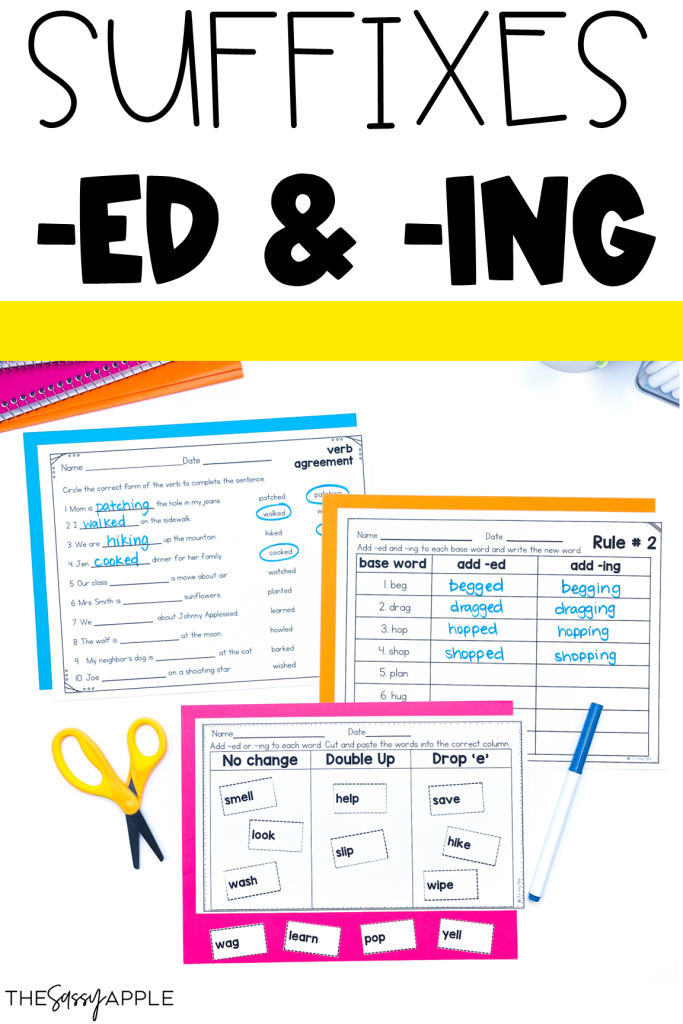Help your 1st and 2nd grade students master adding suffixes -ed and -ing to verbs with ease! Inflectional endings may sound like a complex concept, but it’s as easy as adding a few letters to the end of the word. When inflectional endings are added to the end of a word, they change the meaning or quality of the word. Let’s look at how to teach inflectional endings in the classroom.
Review Verbs
Before jumping into a new skill, it’s important to scaffold learning. Since students will be learning how to add -ed and -ing to verbs, it will be crucial for them to know how to identify a verb! A quick refresher should be all it takes.
Playing charades is a fun way to review verbs.
- Divide the class into two teams.
- Prepare a list of verbs, some with -ed endings and others with -ing endings.
- One student from each team acts out the verb without speaking, and their team has to guess the verb.
- Rotate players and continue until all verbs are used.
-ed and -ing meanings
Next, discuss how adding a suffix changes the meaning. I explain that suffixes are letters we add to the end of a base word. I introduce the meaning and start creating an anchor chart for students to reference throughout our lessons.
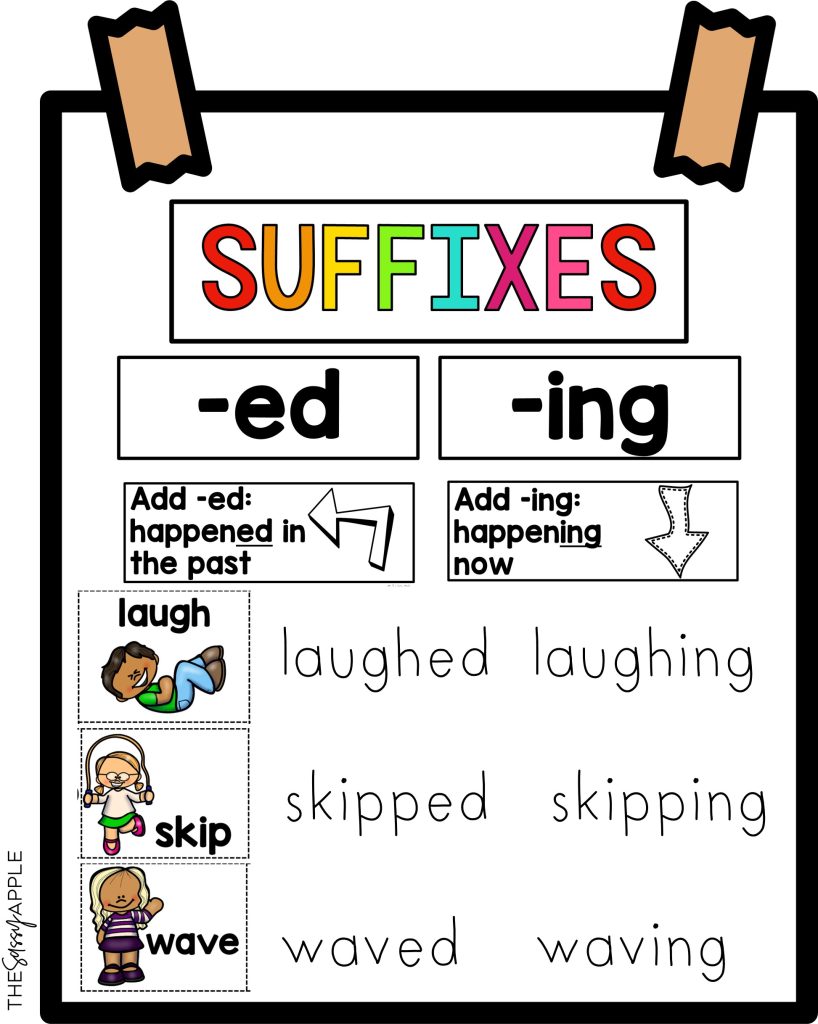
-ed and -ing Rules
Explicitly teaching phonics rules, like double consonants or when to use -c, -k, or -ck, is so important. After we’ve discussed how the meaning changes when adding -ed or -ing, now it is time to focus on the spelling rules.
- No Change: Many words like walk or play don’t need to change at all before adding -ed or -ing
- Double Up: When we have a one-syllable short vowel word, the consonant must be doubled before adding -ed or -ing.
- Drop ‘e’: If a word ends in -e like wave, you drop the -e before adding -ed or -ing.
- Some words like run and go change completely instead of simply adding -ed. Irregular verbs require a dedicated lesson of their own.
Applying the Rules
Now that students have learned the meanings and rules, it’s time to apply their knowledge. Practice sorting verbs based on how they will change when adding -ed or -ing. This activity and recording sheet will really put students’ understanding to the test!
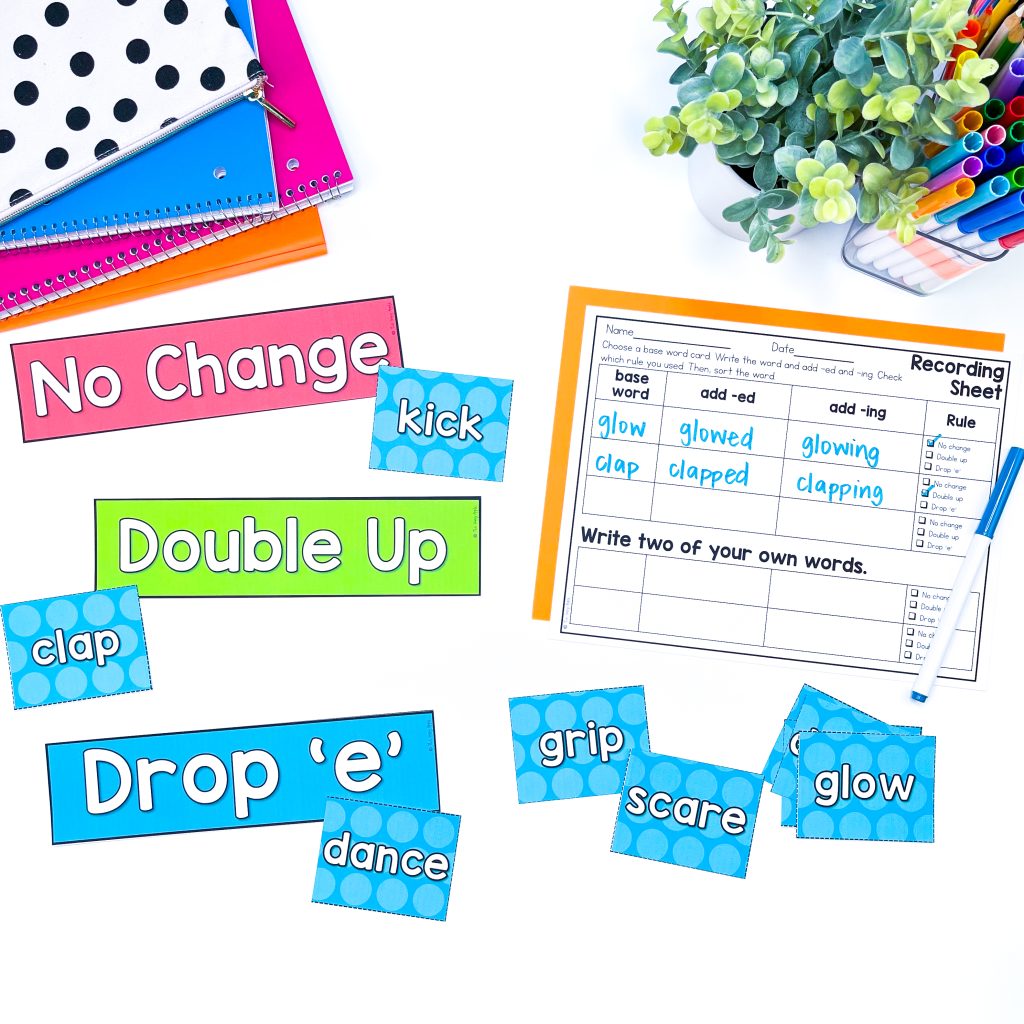
Providing ample opportunities to practice words by sorting, writing, reading, and identifying will ensure students master this skill. The more exposure your students get to words with -ed and -ing, the more confident they will become in their skills. Not only will their understanding transfer to reading but also independent writing as well!
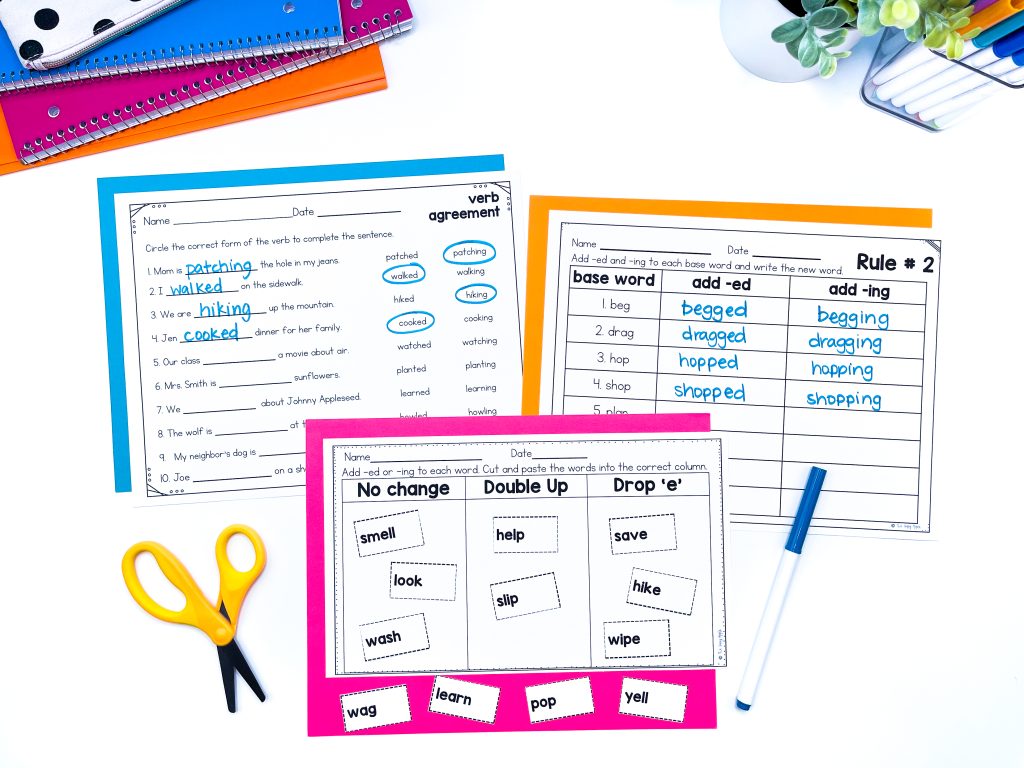
Reading Practice
Finally, students have had opportunities to practice reading and writing words with -ed and -ing, it’s time to transfer their skills to text. Students can stop to identify words with suffixes -ed and -ing as well as their base words. With the recording sheet, they will identify which rule the base word follows when -ed or -ing is added. Learning how to decode words with -ed and -ing will not only support students’ reading fluency but also their comprehension.
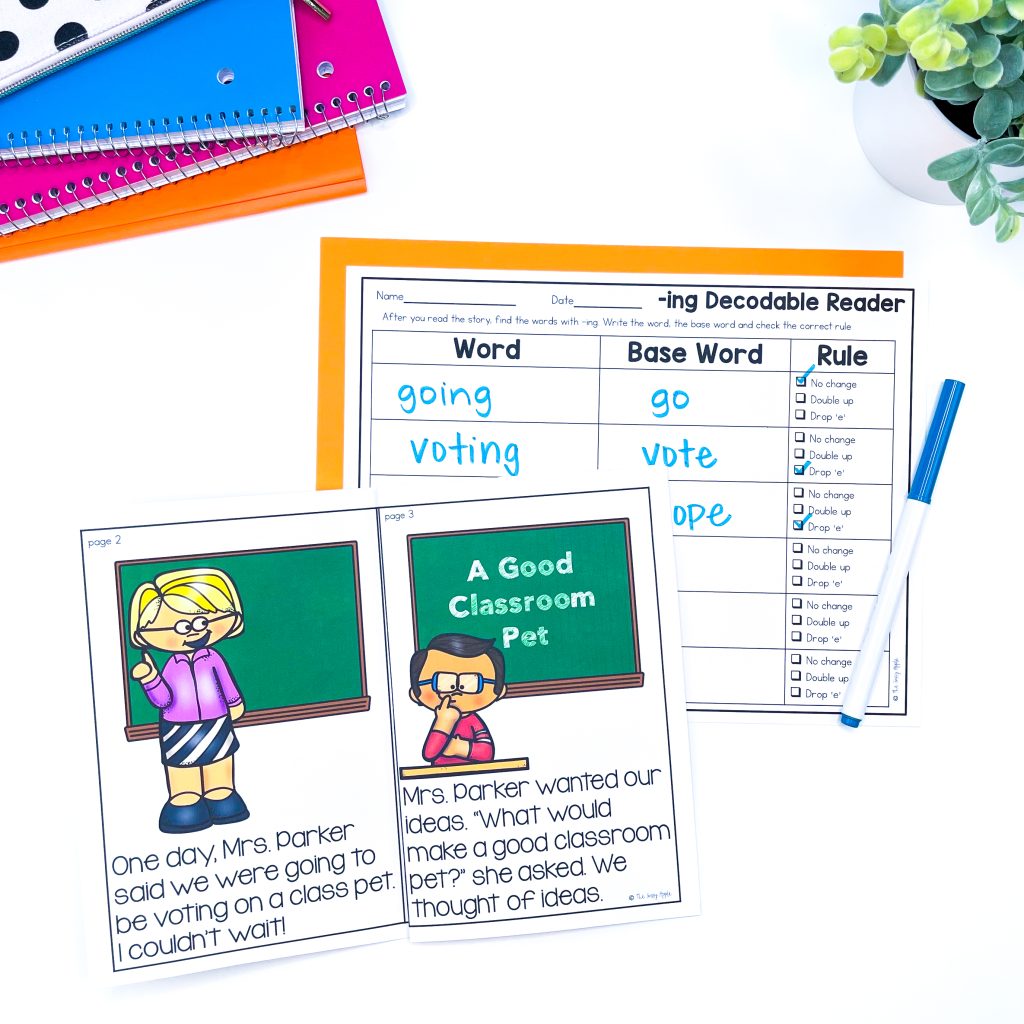
Teaching how to add suffixes -ed and -ing to verbs can seem like a daunting task, but there are many methods and activities to make it easier. Providing students with clear rules for adding the suffixes and offering visual aids can really help them grasp the concept. Applying the skill to text helps students understand words with -ed and -ing in context. Ultimately, with a few simple guidelines and the right activities you can make learning about suffixes -ed and -ing enjoyable as well as informative. Check out activities for teaching -ed and -ing now!
